We tend to forget it these days, but a unified Italy is actually quite recent. In the period leading up to the country's reunification on 17 March 1861, the regions minted some very interesting coins, including the five I'm going to introduce in this article.
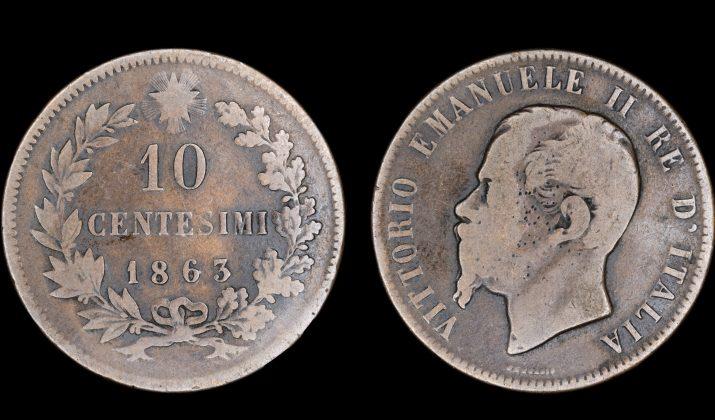
This silver piaster of the Two Sicilies dates from 1859. It bears the effigy of François 2 de Bourbon (1836-1894). He was the last king of the Two Sicilies before the reunification of Italy. The son of Marie-Christine of Savoy and Ferdinand II, his mother died when giving birth to him, so he was raised by his father’s second wife, Maria Theresa of Austria.
He ascended the throne in 1859. The Two Sicilies were still opposed to the reunification of Italy.
However, after Garibaldi’s troops invaded his kingdom, Francis II and his wife, Maria Sophia in Bavaria had no choice but to go into exile in Rome, where they maintained a government in exile. He capitulated on 13 February 1861. As his reign lasted only one year and 8 months, few coins were minted during
this period, making them rarities.
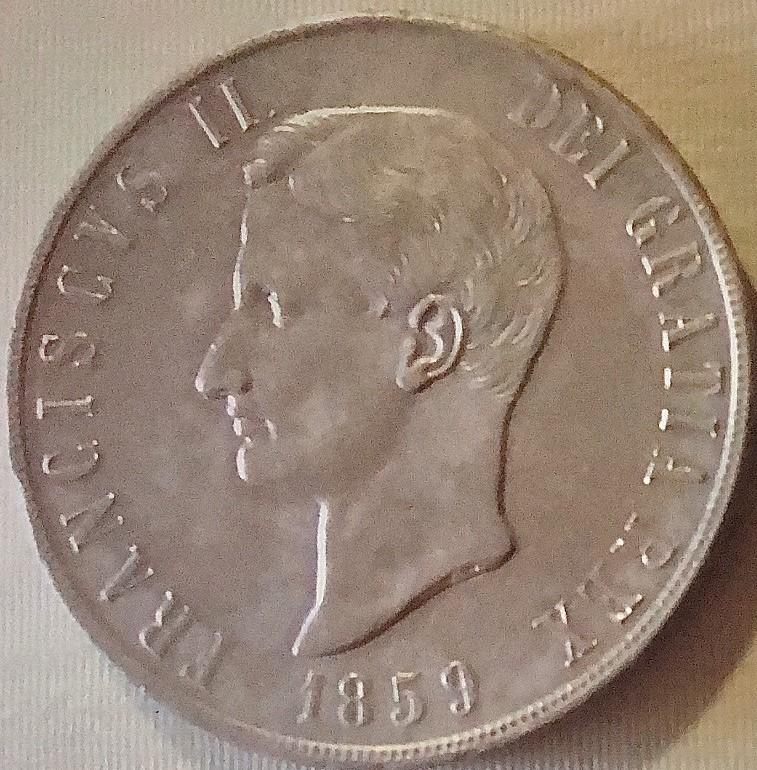
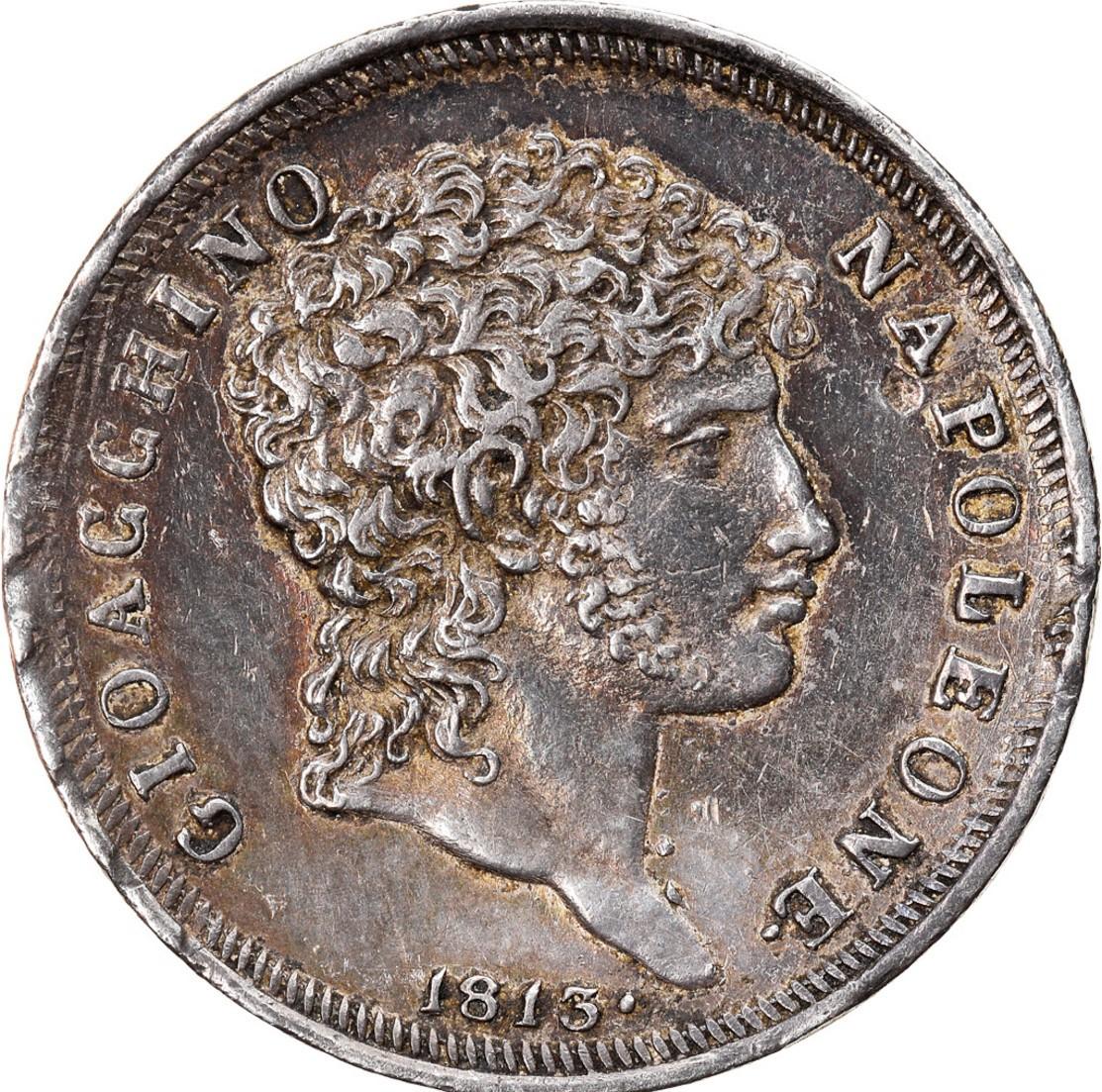
The second coin comes from Naples, it dates from 1813 and depicts Joachim Murat who ruled Naples bearing the name Joachim-Napoleon from 1808 to 1815.
Joachim Murat had married Napoleon I’s sister Caroline Bonaparte in 1800. He was above all a military man who was appointed Grand Admiral of the Empire before receiving the Kingdom of Naples. He reigned for just over 6 years. After Napoleon’s defeat at Waterloo, Murat tried to reconquer his kingdom, but was captured in Calabria and sentenced to death. He was executed on 13 October 1815.
During his reign, 8 different types of coin were minted in his effigy. The mintage of this one (199,000) makes it a rarity. It is not the rarest as the first mintage in 1812 was only 27,000.
For Veneto, I chose this superb 5 lira coin from 1848. This coin was minted by the provisional government that ran the Republic of Venice from
1848 to 1849. This was the short period of the Republic of San Marco, which began on 17 March 1848.
At the time, Italy was not yet unified and Veneto was under Austrian rule. Following a revolution by the Venetians, the region became independent for a few months. It had to surrender to Austria in August 1849, during which time it minted a patriotic currency.
The coinage dates from 22 March 1848. On the obverse, In the centre of a circle, the lion of Saint Mark, winged and haloed rests its right paw on a tablet with inscriptions. Around it are the date and the Republic of Venice. This coin was engraved by Antonio Fabris.
On the reverse the value of the coin (5 lira) an intertwined oak and olive branch
and the inscription “Union Italienne”. On the edge, an inscription translated as: “God bless Italy”. Only 11,000 copies of this silver and gold coin were minted.
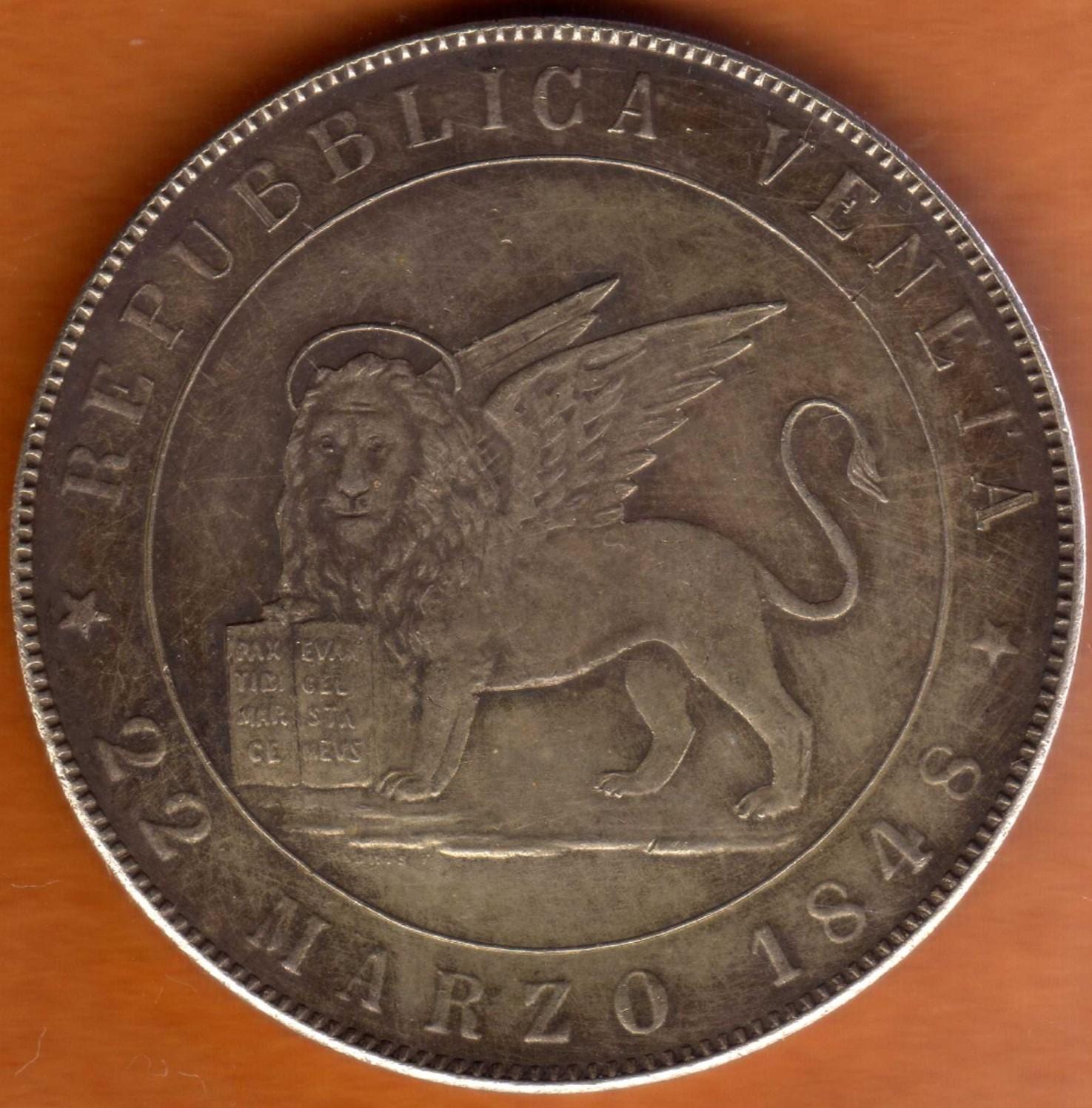
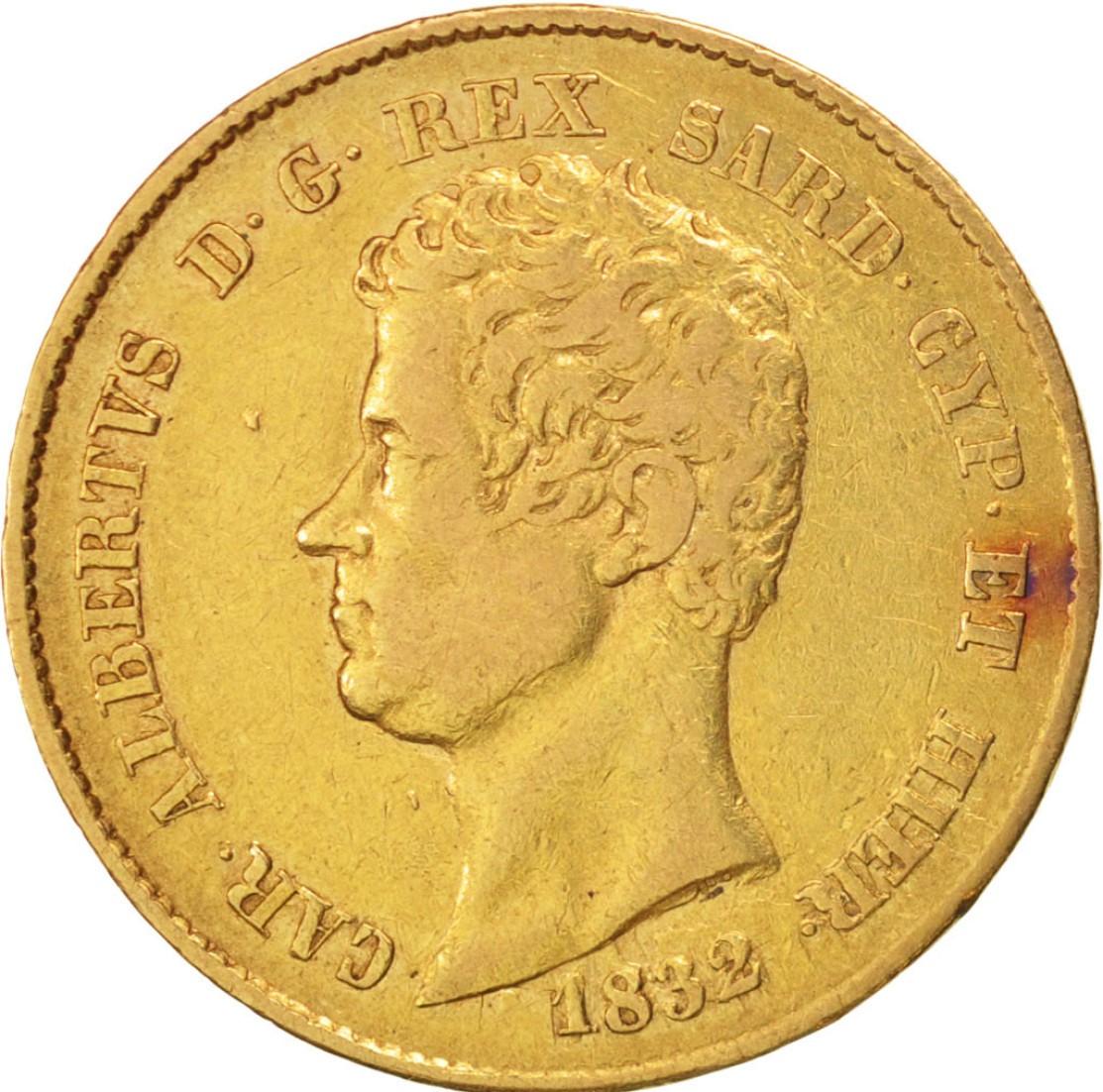
My next choice was a coin from Sardinia. This 20 lira gold coin bearing the effigy of Carlo Alberto dates from 1832. Carlo Alberto, whom we know as Charles-Albert of Savoy, was King of Sardinia, titular King of Cyprus and Jerusalem, Duke of Savoy and Duke of Genoa from 1831 to 23 March 1849, Prince of Piedmont, seventh Prince of Carignan from 1800 to 23 March 1849, and Count of Barge from 1800 to the day of his death.
He became King of Sardinia in 1831, succeeding his cousin Charles-Felix of Savoy, and minted his first gold coins the same year. He held the throne until his death in 1849. The coin features on the obverse a portrait of the king surrounded by inscriptions relating to his various titles, and on the reverse a wreath of knotted olive branches above which is the coat of arms of Savoy crowned with the collar of the Supreme Order of the Most Holy Annunciation.
The coin’s value lies not only in its precious metal but also in the fact that it was minted in only 74,000 examples, which currently makes it a rarity.
I would then like to tell you about this very beautiful Parma silver coin bearing the effigy of Marie-Louise of Austria, who was Napoleon I’s second wife. The Duchy of Parma over which she reigned was annexed to France in 1808.
She became the Grand Duchess from 1814 to 1847 before the return of the Bourbons.
This 1832 5 lira coin is particularly sought after by numismatists. It circulated between 1815 and 1832. This is therefore its last year of minting. It was engraved by Luigi Manfredini.
On the obverse, the bust of Maria-Luigia wears a diadem and a chignon. The inscription around the diadem can be translated as “Marie-Louise, princesse impériale, archduchess of Austria”.
On the reverse of the coin, an ermine mantle, crowned covering the heraldry of the Duchy: part 1, of Farnese; 2, of Gonzaga; over all, tierce in 1 of Habsburg, in the middle of Austria then Lorraine, surrounded by the collar of the Order of
St Michael and the legend that can be translated as “By the grace of God, Duchess of Parma, Piacenza and Guastalla”. The mintage of this coin is 44,000.
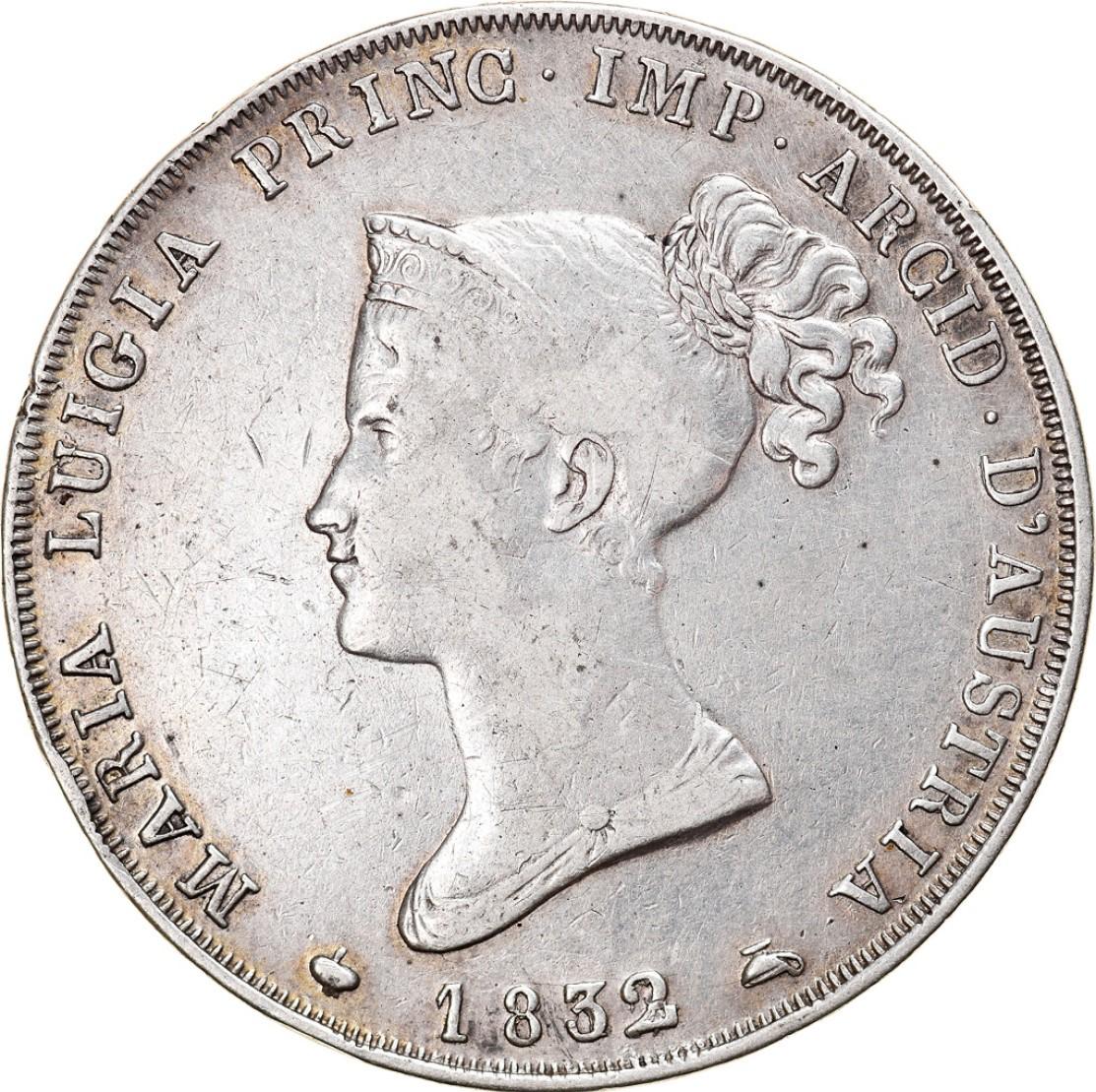
One of the great advantages of coins is the fact that, through them, swathes of history are revealed. When Italy began its unification, headed by King Victor-Emmanuel II, all these coins began to be replaced and to bear the king’s effigy. But they leave an indelible mark on a part of history that is hard to imagine today. Thousands of antique Italian coins are on sale at Delcampe.





